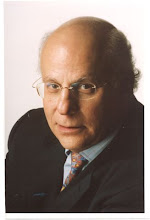Ever convinced of the relevance of my TV LAB documentary, I continue to seek funding for it. When I send out a progress update and a request for donations, as I did recently, I hear from TV LAB creators whom I haven’t yet interviewed but who would like me to add their voices and program excerpts to my rough cut; or I learn about someone I must meet – and I add the name to my database.
In the course of my work as a script-doctor and teacher of documentary I meet people in the independent media community who cheer me on because they seek innovation in public media and recognize that the TV LAB era is a model for what’s needed now. But I’m most delighted when my memory is triggered by a name almost forgotten, a reminder of TV LAB programs that I have not yet been able to see.
Such thoughts buoyed up the other night when I attended a special screening of Under Our Skin – a superb, important documentary short-listed for the Oscar. Under the Skin is a beautiful, moving, investigative documentary about the spread of Lyme Disease and the controversy over its treatment in the late stages. It contains animation that alternately has the incisive power of op-ed commentary, the effective clarity of scientific illustration, and the painterly beauty of an imagined landscape. In the credits, I saw the name of the Director of Animation: Eli Noyes.
I recalled a list of TV LAB programs circa 1977: Magic Mind of Eli Noyes, Part One, Two and Three. I’ve never been able to see those TV LAB animations. But I remember seeing his wonderful earlier short film Clay or the Origin of the Species.
Noyes is a creative artist whose life intersected with the TV LAB; and like many other TV LAB artists, he continues to make innovative contributions to our culture and society. See clips of his animation at www.alligatorplanet.com.
Noyes animation makes a special, vital contribution to Under Our Skin. Filmmaker Andy Abrahams Wilson, credited as producer/director/camera, adds Noyes’ talent to his own gift for visualizing our natural environment and connecting us to it. Though there’s not a deer in sight, Wilson shows us many ticks close-up. One senses the filmmaker could bring the environmental background story to the fore in a companion documentary: Is not global warming one reason for the spread of Lyme disease? But Wilson keeps his story focused on the medicine, on the victims and on the doctors.
Under Our Skin is impressive for its extraordinary research and scope. Not only do its compelling character vignettes span the United States and show a range of experiences with Lyme disease, but also a veritable Greek chorus of front-lit close-up interviews – shot against a neutral off-white background – remind us that we are confronting an epidemic not a series of isolated incidents. (A similar, effective massing of voices to underscore a widespread phenomenon may be seen in Marc Levin’s excellent HBO documentary Schmatta: Rags to Riches to Rags, about the loss of garment manufacturing jobs in the United States.)
Wilson’s senior producer is science journalist and screenwriter Kris Newby, who became an expert on the politics and medicine of Lyme disease after having been afflicted with it. His editor Eva Ilona Brzeski deftly intercuts Newby’s interview with animation and live action footage as she interweaves the several personal stories that are the heart of Under Our Skin. In this 103-minute documentary, I had a fleeting wish to tighten it ever so slightly; but as soon as the thought entered my mind, the documentary took another astonishing turn and the medical story became a political and economic story. Even near the end when the filmmakers introduce new material and thus appear to “violate” one of the “rules” of documentary, they effectively underscore the relentless spread of Lyme disease and the persistent efforts of adventurous doctors in a divided medical community to fight this scourge that some say is more devastating than AIDS.
The timing for this documentary should be ideal given the debate over health reform in Congress, but so far Under Our Skin does not have a distributor. Perhaps, an Oscar win will get it distribution. The terrifying implications of this documentary for our democracy make it vital that it be seen and felt, thought about, and acted upon.
Under Our Skin makes palpable and disturbing how current laws, by allowing the patenting of genes, have restricted the free flow of scientific information. Money-Driven Medicine, produced by Alex Gibney, and distributed by B-Side, makes a similar point about how money controls medical outcomes. It strikes me as the ultimate irony – and tragedy – that in the age of the Internet and crowd-sourcing that scientific knowledge is actually locked up for private profit – or as Eli Noyes’s vivid animations show: hidden behind a drawn window shade.
In the credits I spotted Amy Tan’s name. Intrigued, I searched the web and found a Washington Post article in which she tells her story. Imagine, a documentary so rich in texture that it has no time to explore the Lyme disease experiences of the celebrated author of The Joy Luck Club. However, an extended interview with novelist Amy Tan is on the DVD for sale at www.underourskin.com.
Tribeca Cinemas will screen Under Our Skin on Saturday January 9, 2010 along with other Oscar-nominated documentaries.
Meanwhile, I made email contact with Eli Noyes, who directed the animation for yet another documentary on the 2010 Oscar short-list: The Most Dangerous Man in America: Daniel Ellsberg and the Pentagon Papers,” directed by Judith Ehrlich and Rick Goldsmith.
Now the challenge is to find the resources to restore Noyes' early TV LAB work.

